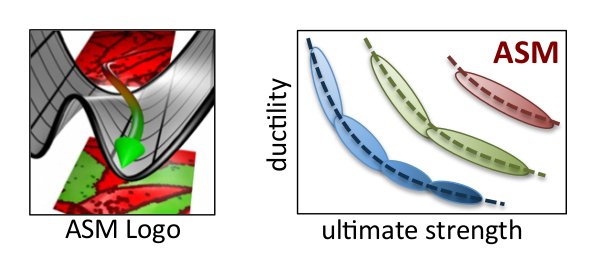
Adaptive Structural Materials
The 'Adaptive Structural Materials' (ASM) group is a joint experimental and theoretical (ab initio) effort to develop next-generation high-strength and high-ductility metallic materials.
This research group is no longer active!
Blazej Grabowski is now at Stuttgart University.
Challenges
A strength but at the same time challenge of our group is the intimate coupling between quantum-mechanically guided design (first principles) and state-of-the-art experimentation. To address this challenge we can draw on high-quality work we have conducted previously. On the theory front, we have developed and applied a multitude of approaches over the recent years to efficiently and accurately tackle the finite temperature description from first principles (see "Projects" link below). With this, we resolve a serious but very common drawback of typical first-principles applications. A key future challenge is the incorporation of the various methods and techniques into a single unified approach, since we expect various physical mechanisms (electronic, vibrational = quasiharmonic + anharmonic, magnetic, structural defects= vacancies + dislocations +..., configurational) to be crucial in the design of ASMs. On the experimental front, we employ (i) various high-end metallurgical production and processing routes, (ii) multi-scale microstructural characterization (down to atomic resolution) and mechanical testing, and (iii) high-resolution in-situ characterization of phase transformations and microstructural deformation mechanisms. The latter is of particular importance and a key future challenge for ASMs, since the determination of the stable regimes of the introduced unstable phases is in most cases only possible through such in-situ analysis.
Members |
Projects |
Publications |